Physiotherapy Exercises for Lower Back Pain
Physiotherapy exercises for lower back pain are highly useful for managing low back pain. Here we update a few Best Easy to do Home exercises that are highly recommended by physiotherapists.
Here we update a few easy-to-do Home exercises that can help to improve the function of lower back pain. When you do these exercises regularly, it can make your lower back fully functional. Here we are updating a few best exercises your physiotherapist might also suggest to you. Make sure you follow their instructions – these exercises are just suggestions.
Low Back Exercise are divided into three main types of Exercises :
- Low Back Core Muscle Strengthening Exercise
- Low Back Extension Exercise (McKenzie extension exercises,)
- Low Back Flexion Exercise (William’s flexion Exercise)
Low Back Core Muscle Strengthening Exercise
The Lumbar/Core Strength and Stability Program below can be utilized as a preventative rehabilitation program if you are recovering from a Low Back Pain.
The “core muscles” is comprised of several groups of muscles including the transversus abdominus, multifidus, diaphragm, and pelvic floor muscles. These muscles work together to provide maximum stability in the
abdominal and lumbar lower back region, and also coordinate the movement of the arms, legs, and spine.
Your core muscles are :
- Front abdominal muscles — the rectus abdominis.
- Muscles along the side of your body — the internal and external obliques.
- A deep muscle that wraps around the front — the transverse abdominal.
- Muscles in your back that are located between your spine bones and run along your spine — the erector spinae and multifidus.
- Your core also includes the diaphragm, muscles of the pelvic floor, hip flexors, and gluteal muscles.
If your muscles of the low back are weak, your body will depend more on passive structures for stability, including ligaments — the tissue that connects bone to bone — as well as the spinal bones or discs which lie between the spinal bones. This can cause extra pressure over low back structures and this may lead to low Back pain. So strengthening of weak muscles and stretching tight muscles are useful in relieving chronic Back pain.
To Strengthen Your Lower Back Core Muscles the following exercises are Helpful :
Quadruped Position Superman exercise :
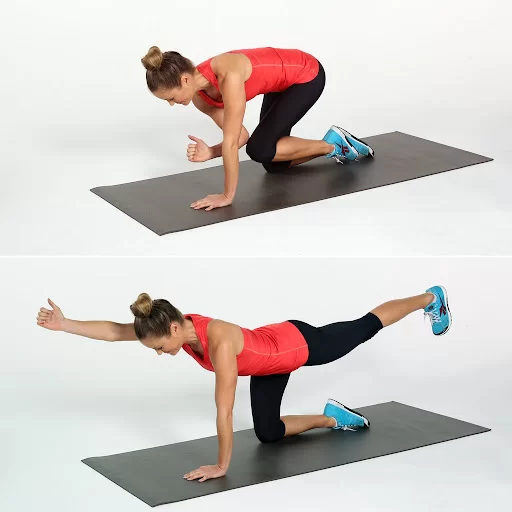
This is easy to perform Home exercises can improve the strength of core muscles and related lumbar back muscles.
This is easy to perform Home exercises can improve the strength of core muscles and related lumbar back muscles.
On Soft Mat – Starts with Quadruped Position keep your hands and knees with your hands positioned under your shoulders and knees positioned under your hips.
Elevate your Right arm and reach it forward until it is aligned with your torso; at the same time, lift your right leg backward until is it aligned with your torso.
Hold this position for 2-4 seconds before gradually returning to the starting position.
Repeat with your left arm and right leg.
Alternate sides for first Day 5 repetitions, 2nd Day 8 repetitions, and from 3rd Day 10 repetitions.
Note – Ensure that your head, neck, and back maintain a neutral position to minimize stress on your neck.
Plank Exercise:
Plank Exercise helps to stabilize, balance, and improve the strength of the body during just about every other activity. The plank exercise can also be used as the basis for a core muscle strength and stability test. The plank is more of a strength-building exercise of Back.
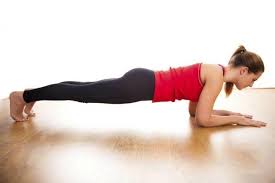
Steps:
- On a Soft mat start in the plank position, face down with your forearms and toes on the floor. Your elbows are directly under your shoulders and your forearms are facing forward. Your head is relaxed and you should be looking at the floor.
- Contact your abdominal muscles, drawing your navel toward your spine. Keep your torso straight and rigid and your body in a straight line from your ears to your toes with no sagging or bending. This is the neutral spine position. Ensure your shoulders are down, not creeping up toward your ears. Your heels should be over the balls of your feet.
- Hold this position for 5-10 seconds on the first day and gradually increase the time up to 30, 45, or 60 seconds. Exercise must be pain-free.
Side Plank Exercise:
This exercise is highly useful for strengthening of Core muscles mainly the transverse abdominis, the obliques, the rectus abdominis, the quadratus lumborum, and the hip abductors.

Steps :
- On a soft mat Place your left hand on the mat, directly underneath your left shoulder. Extend your legs so that your body is in one long line, and stack your right foot on top of your left.
- Try to contract your core and your butt. Lift your right arm up toward the ceiling and look up toward your right hand.
- Hold this position for 4 to 10 seconds, and then repeat on the other side.
- Try doing 5 sets with up to 10-second holds on the first day, 2nd day gradually try to hold up to a full 2-minute hold.
Forward Lunge:
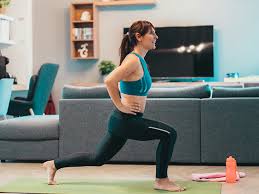
Forward Lunges are an easy-to-do home exercise that improves the strength of gluteal muscles and also contacts your abdominal muscles in a stable, neutral position.
Steps
- Begin in a standing position with your feet shoulder-width apart. Put your hands on your hips or behind your head.
- Step forward (nearly 2 feet) with your right foot, and plant it firmly on the ground.
- Bend both knees to create two 90-degree angles with your legs.
- In this positioning, your shoulders should be directly above your hips and your chest should be upright. Your right shin should be perpendicular to the floor and your right knee should be stacked above your right ankle. Your butt and core should be engaged.
- Push through your right foot to return to standing.
Low Back Extension Exercise:
Low Back Extension Exercise also called the McKenzie Method or McKenzie extension exercises, is a specialized assessment and treatment plan that your physiotherapist (PT) mostly recommends for you. The McKenzie approach includes a series of low back exercises to help diagnose and manage low back pain-related conditions. The McKenzie method was introduced in 1981 by Robin McKenzie (1931–2013), a physiotherapist from New Zealand.
Low Back Extension Exercises are an important part of Treatment in Low Back pain-related Conditions like Disc Prolapse, Ankylosing Spondylitis, scoliosis, etc. These Exercises help improve the strength and stamina of the lower back and also improve flexibility mainly extension range of motion and also improve the overall posture of the spine.
McKenzie extension exercises Program below can be utilized as a preventative rehabilitation program or if you are recovering from a Low Back Pain-related condition eg. Disc Prolapse. These exercise programs are divided into a flexibility exercise and a strengthening exercise.
Flexibility exercise should be done at least 4 to 6 times a week in the early morning, First Day 6 to 8 repetitions and 2nd Day 8 to 10 repetitions and gradually increase the practice as per the stamina of the Body, and the strengthening exercise should be done 4 to 5 times a week. This exercise is also divided into levels “Easy”, “Medium”, and “Difficult”. It is recommended to start with the “Easy” exercises, and improve them before moving into “Medium” or “Difficult”.
Here we update a few East to Do Home exercises that are mostly prescribed By physiotherapists as Home Exercises. If you have back pain, be sure to check with your Physiotherapist before starting any kind of exercise program. If Any Exercise is Painful avoid this exercise, and Gradually increase the Practice.
List of Low Back Extension Exercises at Home:
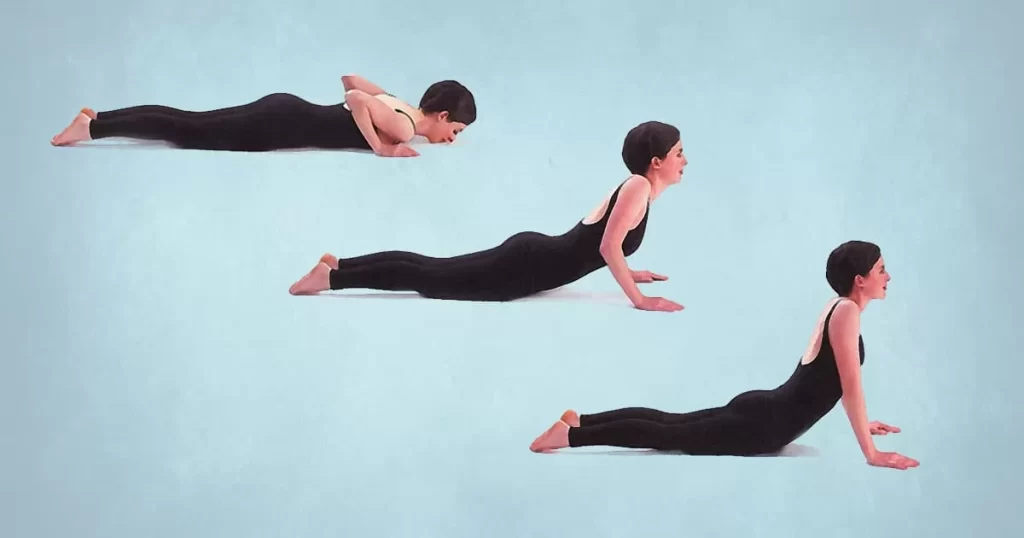
Press Up Back Extension Exercise :
This Exercise is done in a Prone lying position on a mat, with your elbows bent and your hands flat on the ground under your shoulders. Keep your back and hips relaxed, and then use your arms to press your upper back and shoulders up, Hold the press-up position for two seconds. Then slowly return to the starting position.
First Day do the exercise for 5 to 7 repetitions, 2nd the Day 8 to 10, and Gradually increase the repetitions. If your pain is gradually improving, that’s a sign the press-up exercise may be helpful for you.
Superman Stretch and Strength Exercise :
The Superman positional stretch and strength exercise helps strengthen Back extensor muscles and also stretches Back muscles, This Position involves raising the arms and legs simultaneously. This challenging position can benefit the back tremendously.
Steps
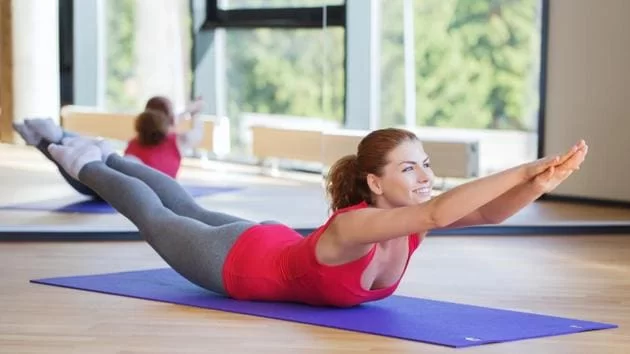
- In Prone Lie down on the mat on your Stomach. Extend your legs behind you.
- Straighten out your arms in front of you. slightly extend your neck and make sure it is aligned to your spine. Keep your gaze on the mat.
- Engage your glutes and core.
- Lift your arms a few inches away from the floor, raising your chest up. In unison, raise your legs a few inches away from the floor. Hold for 4 to 6 seconds.
- Next, lower both your arms and legs onto the floor.
- Repeat the action. Subsequently, try and hold the pose for a longer time.
- You can also try to raise the arms and legs a little higher but remember not to force it.
Prone Back Extensions exercise:
This is one of the most classic exercises that you can do for your lower back strengthening. In this position, you prone lie down on the floor and lift your torso up slowly.
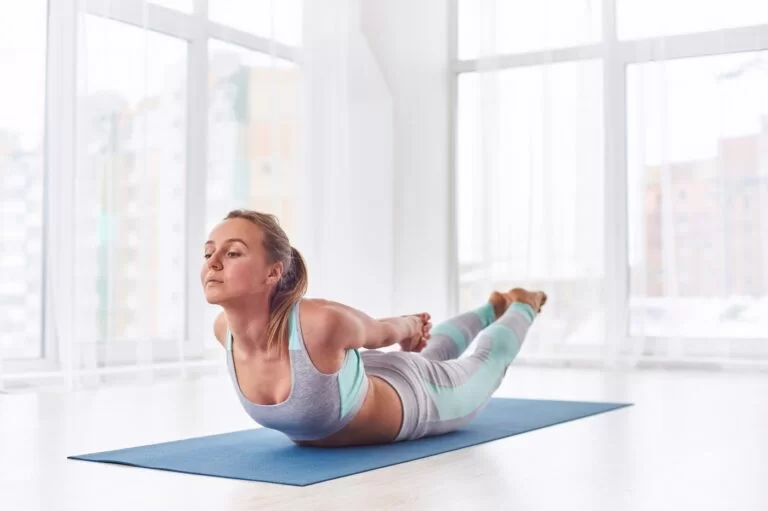
Steps
In a Prone lying position flat on a mat with your hands bent behind the Back gradually raise your head and shoulder in an upward direction Hold for 4 to 6 seconds and then return to the starting position. First Day 5 to 7 repetitions and gradually increase the practice as per your stamina.
This exercise will improve the strength of the Back extensor muscles and also improve the strength of the core muscles.
Cat and Camel Stretch and Strength Exercise:
This simple Cat and Camel stretch and Strength exercise can be performed as a warm-up exercise to improve the mobility of the Spine and strengthen Core muscles. This exercise can also improve your balance and posture.
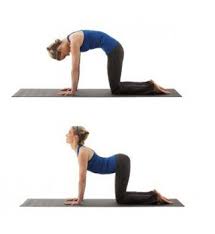
Steps :
- On the Soft Mat You should take the Quadruped Position – Come onto your hands and knees, making sure your hands are under your shoulders, your knees are under your hips and your back is in a straight position.
- Cat Position: Sink your back down towards the floor and lift your head up at the same time, sticking your tailbone out to make a curve with your spine, Hold the Position for 3 to 5 seconds and return to the starting position.
- Camel position: Tuck your head and tailbone in, arching through your spine to mimic a camel hump. Hold the Position for 3 to 5 seconds and return to the starting position.
Do These Practice First Day 5 to 7 Repetitions and gradually increase the practice reach up to 20 to 30 repetitions.
The Low Back Side Glide Exercise:
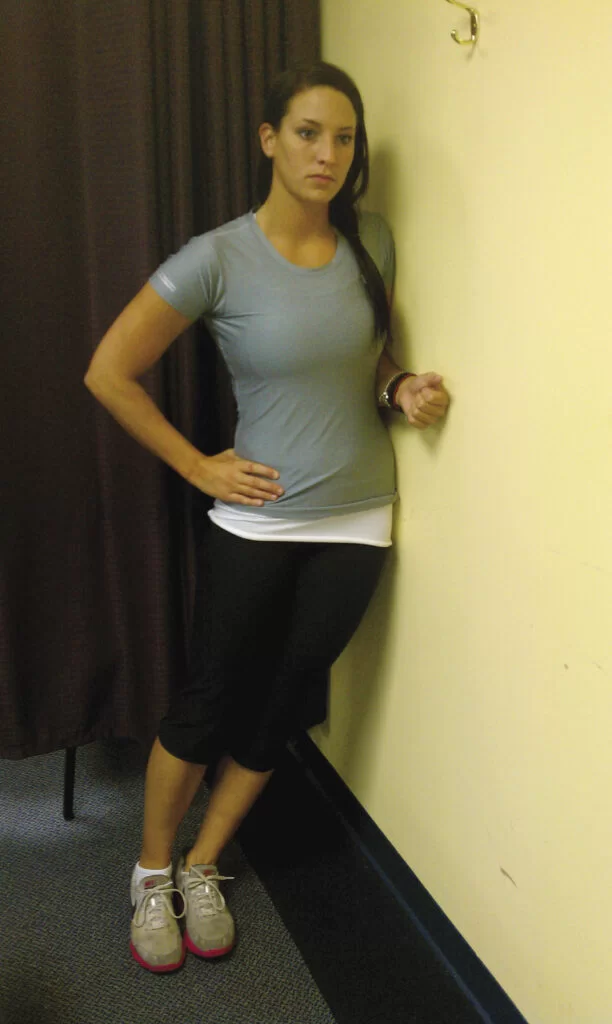
This exercise helps to improve the strength of the core muscles of the lower back and improve mobility of the lower lumbar spine. This is a good exercise for a lateral disc prolapse in the lower lumbar spine. This type of problem can cause lower back pain and buttock pain.
This exercise comes from the McKenzie assessment and treatment philosophy.
Undertaking this exercise properly you need to have been assessed by a Physiotherapist who is Mckenzie trained as doing this exercise the wrong way can make things worse.
Steps
- In a Standing position perpendicular to a wall (about 1 to 2 feet away) with your feet together.
- Lean your shoulder against the wall and tuck your elbow into your rib cage.
- Place your hand against your pelvis and gently press your hips toward the wall (it should feel like your pelvis is gliding underneath your ribs).
- Perform 8 – 10 repetitions on the first day gradually increasing the practice to reduce the pain.
- This exercise all gradually reduces the pain from the periphery towards centralization, which is when the symptoms move away from the periphery and closer to the midline of the lower back. (If your symptoms increase more peripherally after performing this exercise then you must immediately stop the exercise and consult your physiotherapist.)
Low Back Flexion Exercise (William’s flexion Exercise)
Low Back Flexion Exercise also Called William’s Abdominal Exercise Helps to improve the Strength Of the Flexor Group Of Muscles of the lumbar spine And overall Mobility of the lumbar spine mainly through Flexion movement.
This Exercise helps improve the strength of the abdominal and gluteal musculature in an effort to manage low back pain non-surgically. The system was first devised in 1937 by Dr. Paul C. Williams (1900-1978), then a Dallas orthopedic surgeon.
It is the Best exercise to perform since it places minimal strain on your back and can be done while lying down. Low Back flexion has been shown to be an effective exercise for spinal Canal stenosis, Lumbar spondylolisthesis, lumbar facet joint problems, and Lordosis.
Low Back flexion exercises improve the lumbar spine flexion position to reduce excessive lumbar lordotic postures. Flexion Exercises are useful for strengthening the abdominal, gluteal, and quadriceps muscles, and stretching the opposite group of muscles like erector spinae, hamstring, and tensor fasciae latae muscles and the iliofemoral ligament.
Benefits of Low Back Flexion Exercise:
The following benefits are achieved with the Help of the Back Flexion Exercise :
- Strengthen the Weak Abdominal Muscle. This will Help the Overall stamina of the Back.
- Open the intervertebral foramina
- Stretch the back extensor and Hip Flexor muscles and Facets.
- Also Helps in the Correction of Pelvic Tilt by strengthening gluteal muscles.
- Improve overall mobility of the lumbosacral junctions.
A few Best Lists of Low Back Flexion Exercises are as per below :
- Partial Sit-up From Supine Position
- Knee-To Chest Exercise
- Bridging – Pelvic Tilt Exercise
- Hamstring Muscle Stretching Exercise
- Lunges
- Seated trunk flexion
- Full Squat
- Straight Leg Raising
Here we discuss a few Simple and Easy Home Exercises.
Partial to Gradually Full Sit-Up Exercise:

- The patient lies in a supine with knees bent and feet flat Position (hooklying), With hands behind his or her head, then patient elevates the Head and Shoulder until the scapulae clear the resting surface and stress is placed on the rectus abdominus muscles.
- After returning to the start position, the sit-up is repeated for a prescribed number of repetitions.
- The first 3 Days start with 5 to 7 repetitions and then gradually increase the repetitions and also Hold the Positions. Exercise must be pain-free. As strength improves full sit-ups also allow you to perform.
Knee-to-chest Exercises:
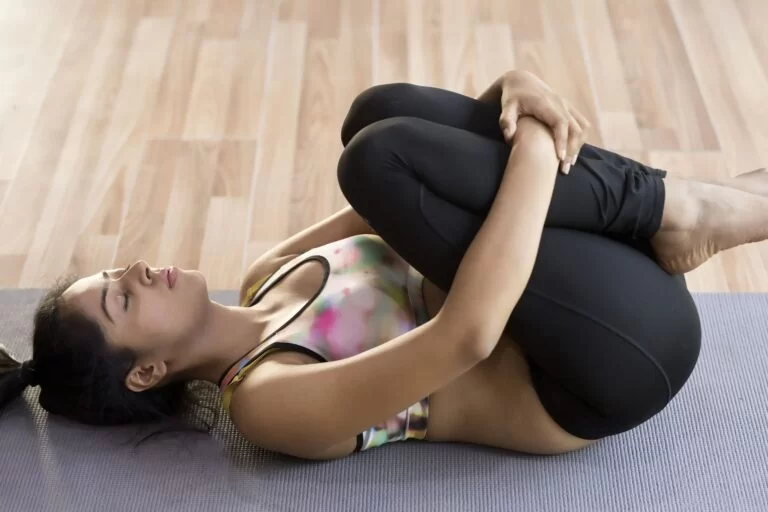
- Single Leg Knee to Chest: Lie on your back with knees bent and feet flat on the floor. Slowly pull your right knee toward your shoulder and hold for 5 to 10 seconds. Lower the knee and repeat with the other knee.
- Double Legs knee to chest: Starts as in the previous exercise. After pulling the right knee to the chest, pull the left knee to the chest and hold both knees for 5 to 10 seconds. Slowly lower one leg at a time.
Bridging Exercise:
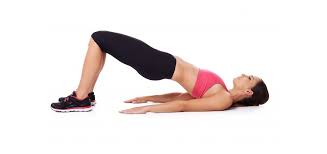
- Supine Lie position on your back on a mat with your knees bent, Elevates your hips off the floor until your hips are aligned with your knees and shoulders.
- Hold for 5 to 7 seconds. Return to the start position and repeat. First Day 7 to 8 repetitions and 2nd day 8 to 10 repetitions and gradually increase repetitions as per stamina.
This exercise helps to improve the strength of the Glutes muscle with other muscles such as hamstrings, lower back muscles, and abdominals.
This exercise is also important for improving the strength of the Core muscles of the Back. With many of the benefits similar to that of a squat, another plus for the glute bridge is that it does not place any pressure on the lower back. This is also an important exercise for people who are unable to squat due to back, hip, or knee pain.
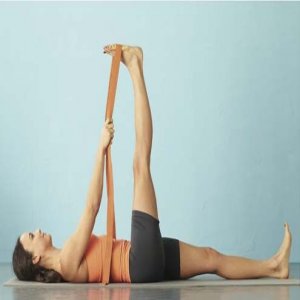
Hamstring Muscle Stretching Exercises:
- Supine Lie down on the ground on a mat Keep your back flat and your legs extended fully position.
- Elevate your right leg, keeping the knee slightly bent, and gradually extending from the knee until you feel a stretch in your hamstring.
- Hold this position for 5 seconds and gradually as progresses increase up to 30 seconds. 5 to 7 repetitions on the first day are recommended and gradually increase the repetition.
Lunges:

- In Standing Position Step forward with one foot until your leg reaches a 90-degree angle Then Lift your front lunging leg to return to the starting position.
- Repeat 7 to 8 repetitions on one leg or switch off between legs and Gradually increase the repetitions per leg.
- 2nd Day 8 to 10 repetitions and 3rd Day 10 to 12 repetitions and Gradually increase more repetitions as per the stamina of the Body.
This exercise is a good stretching exercise for the entire lower extremity, especially the iliopsoas muscle, which may be a perpetrator of low back pain if it is abnormally tight or in spasm.
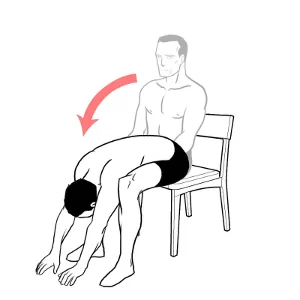
Seated trunk flexion Exercise:
- This exercise is performed in a sitting position in a chair and flexing forward in a slumped position.
- This exercise is helpful in improving Maximum trunk flexion direct stretching of the Back extensor’s stretching and Mobilization of the spine.
Full Squat:
In Full squat your feet, which are typically shoulder-width apart and flat on the floor and your toes are either straight ahead or at a small, 7-degree toe-out position, your knees are straight, and your trunk is erect, starts by squatting down as if you’re sitting into a chair. Your ankles, knees, and hips will bend in unison while your spine stays straight.
As you start to lower, your knees will travel forward over your toes, and your hips will travel backward to keep your center of gravity over your feet.
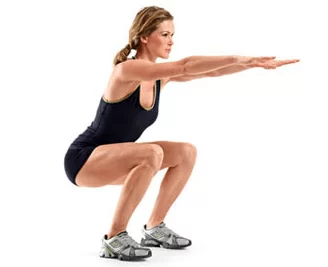
Your trunk and pelvis will stay neutral position and straight as you bend at your hips. At the lowest depth, your pelvis will be in relative alignment with your shins. Ideally, your pelvis will remain in a neutral position, without tilting forward or backward.
Try to keep Your knees will stay in alignment with your feet when viewed from the front.
The full squat improves significant mobility in several joints — namely your hips, knees, ankles, and even your lumbar spine and also improves the strength of related muscles mainly the quadriceps, Glutei, and calf muscles and also related spinal muscles.
The full squat improves significant mobility in several joints — namely your hips, knees, ankles, and even your lumbar spine and also improves the strength of related muscles mainly the quadriceps, Glutei, and calf muscles, and also related spinal muscles.
Conclusion:
Low Back flexion exercises are specifically used in low back pain-related conditions like Spinal canal Stenosis, Lumbar Spondylolisthesis, Lumbar Spondylosis, Lumbar lordosis, and facetal locking where spinal extension is painful.
Lower back pain exercises to avoid :
Lower Back Pain exercise to avoid is depends upon the diagnosis of your lower Back Pain, if You have Diagnosis of Disc Prolapse of around L-4-5 / L-5-S1 with the Posterior Bulge You must avoid Low Back Flexion exercise, This exercise puts extra Pressure over the disc and further increase your Symptom’s, So Diagnosis of Low Back pain is highly important and you advise that not to do direct exercise after watching any youtube video or reading an article, you should first visit nearby Physiotherapist, They examine you and according to assessment, they give few Best exercise according to your Diagnosis.
2nd Example: If you are diagnosed with Lower Back pain with Lumbar Spondylolisthesis, You must avoid Back extension exercises, as this will increase your symptoms and pain. So don’t do exercise without diagnosis and Proper Medical advice.
How to Heal lower back pain fast?
Healing of Your lower Back pain depends upon the severity of symptoms, Diagnosis, and your Day-to-day activity. Rest and Proper Medical treatment with the use of a Lumbo-sacral Belt help in the fast Healing of lower Back Pain symptoms.
In Acute Lower Back Pain Rest, Ice Pack, and NSAID drugs are required and exercise is not advisable if allowed then only pain-free isometric exercise and gradually increase the practice only easy to do exercises. As pain is reduced strengthening the lower back is Highly important and exercise must be done in a pain-free way, if any exercise is painful then avoid this exercise.
Ergonomic of Low Back (Low Back Care):
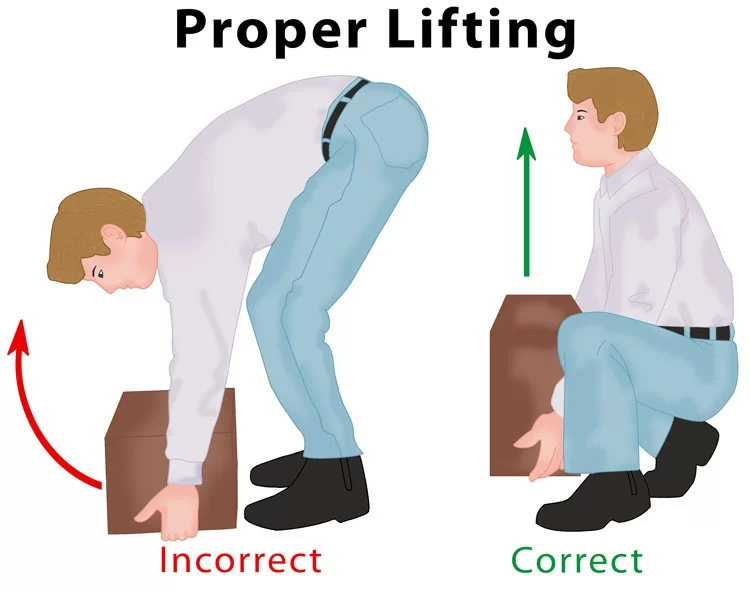
Ergonomic Care / Low Back Care in Various Day to day Activities is Important mainly in the acute phase of low back pain and is required to reduce pain and related other symptoms of low back pain. These Tips Are as per below:
- Lifting weight from the Floor is avoided if required Bending from the Knee is Advisable and reduces back bending as low as possible.
- From the Supine to sitting position, First, take a side-lying position and the legs on the floor and then use of hands to take a sitting position to reduce stress over the lower back.
- Avoid Long Sitting Position.
- Avoid Exercises That Are Painful.
- Keep Note Of which activity Causes pain in day-to-day activity and try to avoid this activity.
- Two-wheeler driving also increases pressure over low back so avoid two-wheeler driving.
- Four-wheeler drive slowly especially in Bump Locations and other rough area.
- Enough rest is required in between day-to-day activities to relax your back muscles.
- in the computer or Office take back fully supported and try to take a chair underneath the table to avoid back bending forward.
- Regular follow-up Doctor Especially Physiotherapist is advisable Because is the most advanced and natural way of treating lower back Pain.

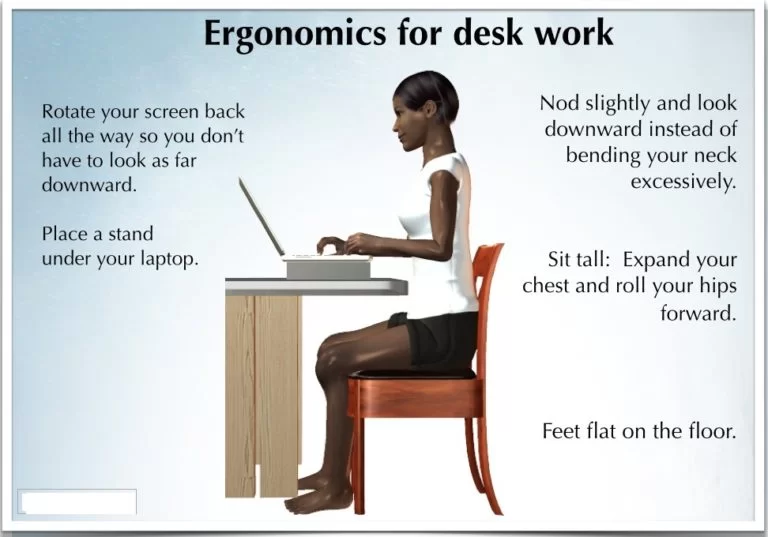
FAQs
What is the single best exercise for lower back pain?
There is no particular specific exercise you can count as a single best exercise, it completely depends upon the diagnosis of lower back pain, if you have Lower back pain due to slipped disc, Back extension is the best option, and avoid Back flexion exercise However if you have Back pain due to Lumbar Spondylolisthesis, you should avoid Back extension exercise and perform Back flexion exercise, so never perform any single exercises for lower back pain and consult your nearest Physical exercise for specific exercises, for lower back pain, pain-free stretching and strengthening exercises is required to complete and permanent solution and it may vary person to person and conditions/diagnosis of the lower back pain.
Does physiotherapy cure lower back pain?
Physiotherapy is the best treatment option that helps to improve the strength and mobility of lower back joints and muscles. It can help to reduce pain and help to start your day-to-day activities again. Physiotherapists use various treatment techniques to relieve lower back pain. it also teaches you how to prevent back pain.
What is the fastest way to relieve back pain?
To relieve the fastest Back pain, avoid painful activities, follow the Physiotherapy exercises according to the guidance of the Physical therapist, follow ergonomics, try to maintain a healthy weight, and avoid prolonged sitting position.
Performing regular Exercise has been one of the best to relieve back pain quickly.
What is physiotherapy treatment at home?
Sit with back support at the curvature of your back, like a towel rolled up. Keep a straight position between your hips and knees. (If necessary, use a stool or foot support.) Your feet should be flat on the floor and your legs shouldn’t be crossed.
How should I sit with lower back pain?
Sit with back support at the curvature of your back, like a towel rolled up. Keep a straight position during sitting position (If necessary, use a stool or foot support.) Your feet should be flat on the floor and your legs shouldn’t be crossed.
What is the best position to sleep in with lower back pain?
According to research, lying on your side is the most effective position for minimizing pain and preventing injury. Back discomfort is more likely to occur if you sleep on your stomach or back by 23% more often. A little pillow placed between the knees can make side sleeping positions more pleasant.

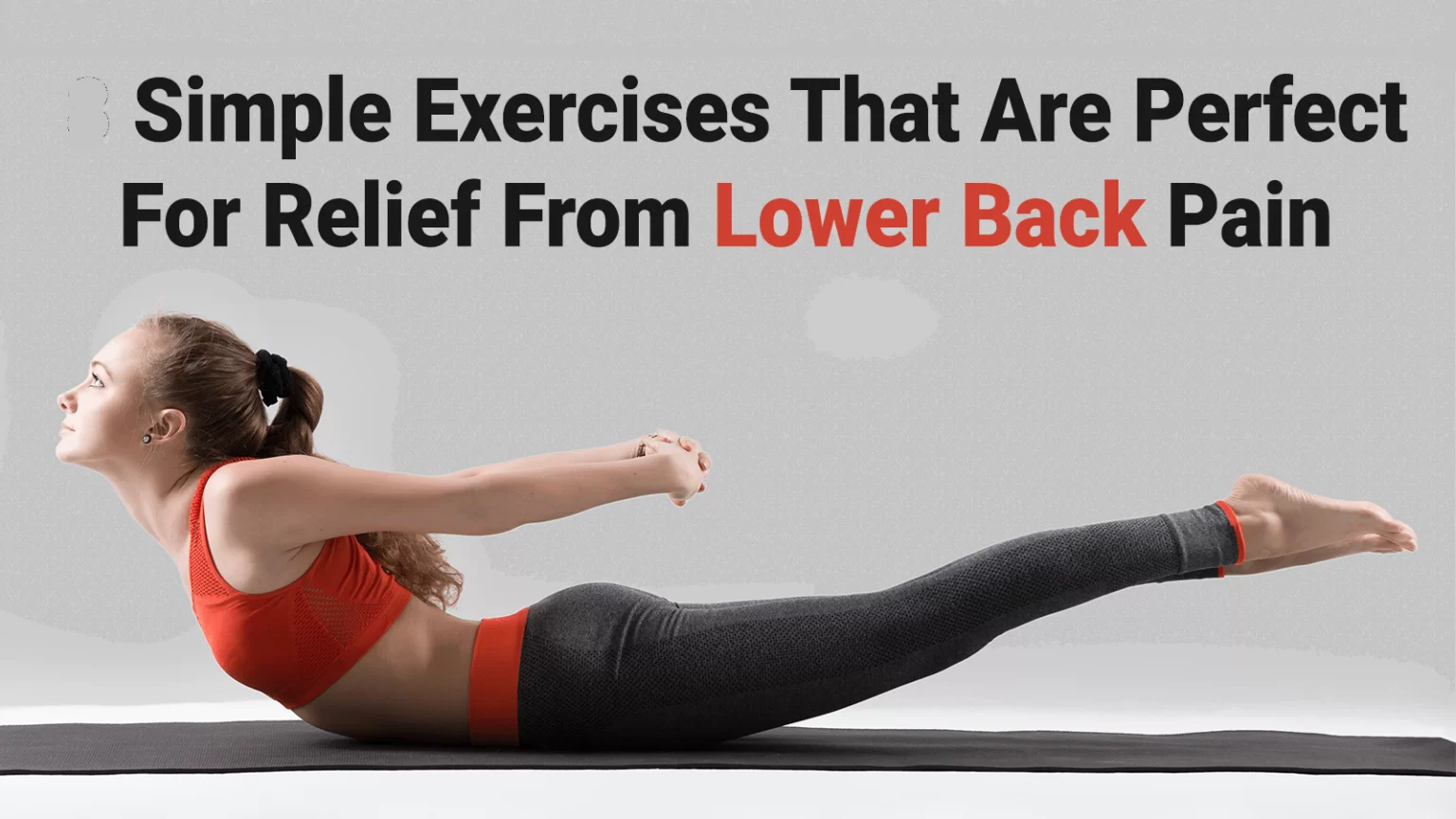

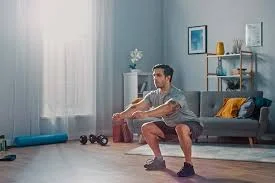

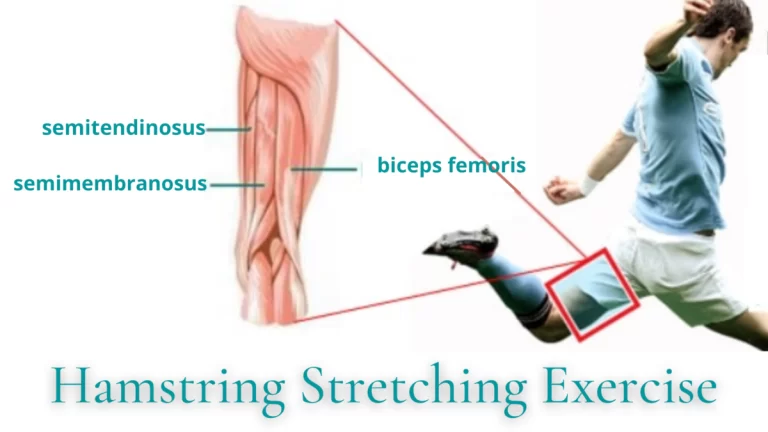
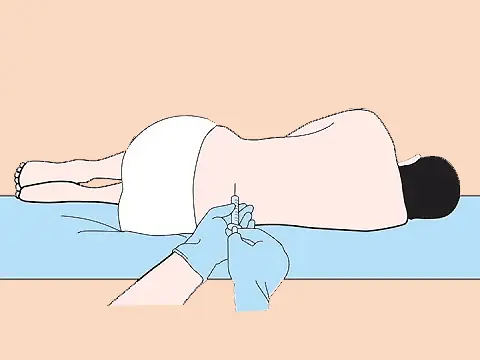
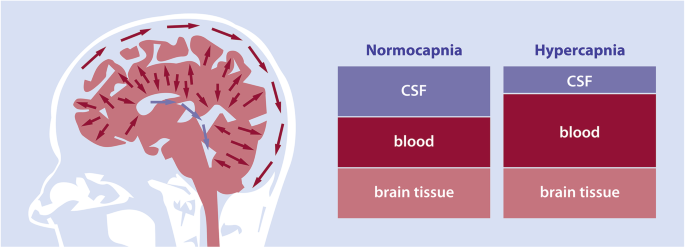
4 Comments